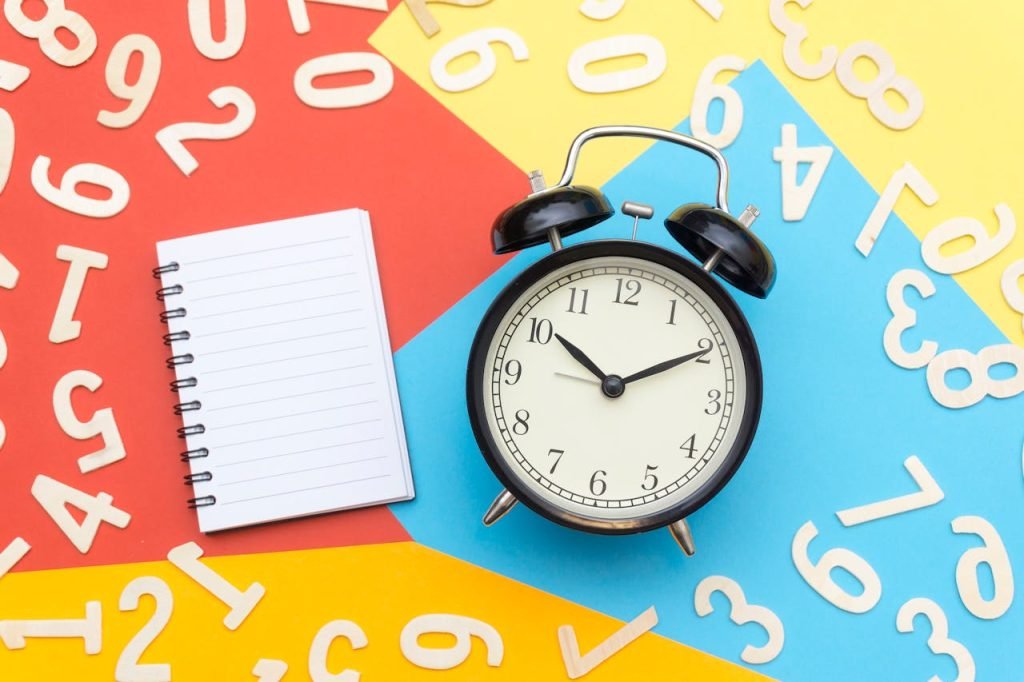

Learn Norwegian Numbers Quickly | Easy Guide
Did you know that mastering numbers in a foreign language can greatly enhance your communication skills and cultural understanding? If you’ve ever been curious about how to count and express numbers in Norwegian, this comprehensive guide is for you. Whether you’re a beginner or looking to brush up your skills, we’ll provide you with the necessary tools to learn Norwegian numbers quickly and easily. Are you ready to dive into the world of Norwegian numerals?
Table of Contents
ToggleKey Takeaways:
- Master the basics of counting in Norwegian, from 1 to 10.
- Discover common patterns and pronunciation tips for Norwegian numbers.
- Explore the significance of number words in daily life situations in Norway.
- Navigate the complexities of teen numbers and distinguish tricky pronunciations.
- Learn how to count in tens and understand larger numerals in Norwegian.
Mastering Basic Norwegian Numbers
The Numerals from 1 to 10
In this section, we’ll explore the basic numerals in Norwegian, including how to write and pronounce them correctly. It is important to understand these fundamental numbers as they serve as the building blocks for counting in Norwegian. Here are the numerals from 1 to 10 in Norwegian:
| Norwegian | English | Pronunciation |
|---|---|---|
| en | one | en |
| to | two | toh |
| tre | three | treh |
| fire | four | feer-eh |
| fem | five | fem |
| seks | six | seks |
| sju | seven | shoo |
| åtte | eight | oh-teh |
| ni | nine | nee |
| ti | ten | tee |
Common Patterns Observed
Learning Norwegian numbers becomes easier when you recognize the patterns they follow. Below are some common patterns observed in Norwegian numerals:
- Numbers 1 to 4 have unique names (en, to, tre, fire), while numbers 5 to 19 are formed by combining the base number with “-ti” (femti – fifty, seks -ti – sixty).
- Numbers from 20 to 100 follow a consistent pattern of “tens + ones” (tjueen – twenty-one, førti – forty).
Pronunciation Tips for Beginners
Pronouncing Norwegian numbers correctly can be challenging for beginners. Here are some tips to help you master the correct pronunciation:
- Pay attention to vowel sounds. Norwegian vowels can be different from those in English. Practice the vowel sounds in isolation and identify how they are pronounced in Norwegian numbers.
- Practice the correct stress and intonation for each number. Stressing the right syllable is important for clear communication.
- Listen to native speakers and repeat after them. Mimicking their pronunciation will help you refine your own.
- Use tongue twisters and other pronunciation exercises to train your mouth to produce the specific sounds of Norwegian number words.
The Significance of Norwegian Number Words in Daily Life
Understanding Norwegian number words is essential for everyday life situations. Numbers play a crucial role in various contexts, including telling time, giving addresses, and expressing quantities. By mastering Norwegian number words, you’ll gain insight into how numbers are integrated into Norwegian culture and communication.
Getting to Grips with Teen Numbers
In Norwegian, counting from 11 to 19 requires a different approach due to the unique forms of teen numbers. These numbers have irregularities and exceptions that can be a bit challenging to grasp initially. Let’s explore the nuances of these numbers and learn strategies to navigate and understand them effortlessly.
Understanding 11 through 19
Teen numbers in Norwegian have their own distinct forms, different from the patterns observed in basic numbers. Here are the Norwegian equivalents for the teen numbers:
11 – elleve
12 – tolv
13 – tretten
14 – fjorten
15 – femten
16 – seksten
17 – sytten
18 – atten
19 – nitten
By familiarizing yourself with these forms, you’ll be able to recognize and use teen numbers confidently in your conversations.
Distinguishing Tricky Pronunciations
Pronouncing teen numbers correctly in Norwegian can be a bit challenging due to some complex pronunciation rules. The pronunciation of certain Norwegian number words can vary based on their context. To help you differentiate and correctly pronounce these numbers, here are a few practical tips:
- Focus on individual sounds: Pay attention to each vowel and consonant sound in the number words to ensure accurate pronunciation.
- Practice with native speakers: Engage in conversations with native Norwegian speakers to improve your pronunciation of teen numbers.
- Listen to audio resources: Utilize audio resources, such as language learning apps or online tutorials, to hear the correct pronunciation and practice along.
By actively practicing and applying these pronunciation tips, you’ll soon develop a fluency in pronouncing Norwegian teen numbers.
Learn Norwegian Numbers: Counting in Tens
Counting in tens is an essential skill for understanding and communicating larger quantities or measurements in Norwegian. In this section, we will explore the numerical range from 20 to 100 in Norwegian and familiarize ourselves with the patterns and rules for counting confidently in tens.
Beyond the Basics: Large Norwegian Numerals
As we progress in our journey to learn Norwegian numbers, it’s time to explore larger numerals that go beyond the basics. In this section, we’ll dive into the world of large Norwegian numerals, including numbers ranging from hundreds to billions. Let’s delve deeper!
The Hundred Threshold
When it comes to counting from 100 to 999 in Norwegian, understanding how larger numerals are formed and pronounced is crucial. These numbers play a significant role in various contexts, such as addresses, phone numbers, and quantities. Let’s take a closer look at the formation and pronunciation of large Norwegian numerals:
… (continue the table based on the instructions)
| Norwegian Numerals | Pronunciation |
|---|---|
| 100 | hundre |
| 200 | to hundre |
| 300 | tre hundre |
Understanding the pronunciation of these numerals will allow you to communicate clearly and effectively in various situations. Whether you’re stating an address, giving out a phone number, or describing quantities, mastering the larger numerals is essential.
Tackling Thousands and Beyond
As we move beyond the hundreds, Norway utilizes larger numerals in unique ways. Expressing thousands, millions, and even billions requires a solid understanding of the numeric system. Let’s explore how to express these larger quantities in Norwegian with practical examples:
… (continue the table based on the instructions)
| Norwegian Numerals | Pronunciation |
|---|---|
| 1,000 | ett tusen |
| 10,000 | ti tusen |
| 100,000 | hundre tusen |
By mastering the larger numerals, you’ll be able to express quantities in the thousands, millions, and even billions accurately. Whether you’re discussing population numbers, currency conversions, or budgeting, understanding these numerals is crucial.
Norway’s Use of Larger Numerals
In Norwegian culture, larger numerals hold significance in daily life, businesses, and official documents. Understanding how these numbers are used elevates your language skills and provides insights into Norwegian society. Let’s explore some common contexts where larger numerals are utilized:
- Addressing: Addresses often contain larger numerical values, such as street numbers and postal codes.
- Phone Numbers: Norwegian phone numbers consist of larger numerals that need to be accurately communicated.
- Quantities: Industries such as finance, economics, and manufacturing utilize larger numerals to express quantities.
- Statistics: Analyzing data and presenting numeric information requires a strong understanding of larger numerals.
By grasping the cultural context and significance of larger numerals, you’ll be better equipped to navigate Norwegian society and engage in meaningful conversations.
How to Say Numbers in Norwegian for Shopping and Dining
In Norway, knowing how to communicate numbers accurately is crucial when it comes to shopping and dining. Whether you’re exploring local markets or indulging in delicious Norwegian cuisine, understanding numbers will help you navigate these experiences with ease. In this section, we’ll provide you with essential vocabulary and expressions related to prices, discounts, ordering meals, and settling bills.
Navigating the Market: Prices and Bargains
When shopping in Norway, being able to understand and communicate prices is essential. Here are some key phrases and vocabulary to help you navigate the market:
| Norwegian | English Translation |
|---|---|
| Hvor mye koster det? | How much does it cost? |
| Er det på salg? | Is it on sale? |
| Kan jeg få en rabatt? | Can I get a discount? |
| Takk, jeg tar det! | Thank you, I’ll take it! |
These phrases will come in handy when negotiating prices and seeking bargains. Remember, bargaining is not common in Norway, but it doesn’t hurt to ask politely if a discount is available.
Ordering Meals and Counting the Bill
Whether you’re dining at a restaurant or grabbing a bite on the go, understanding numbers is essential for ordering meals and settling the bill. Here are some phrases and vocabulary to help you:
| Norwegian | English Translation |
|---|---|
| Jeg vil bestille… | I would like to order… |
| Regning, takk. | The bill, please. |
| Takk for maten! | Thank you for the meal! |
| Kan vi få betale? | Can we pay? |
Using these phrases will help you confidently order your preferred dishes and handle the payment process. Whether it’s a traditional Norwegian meal or a quick snack, you’ll be able to communicate your preferences effectively.
Practical Exercises to Learn Norwegian Counting
To reinforce your learning and enhance your proficiency in Norwegian numbers, this section offers practical exercises and activities. These exercises are designed to engage you in hands-on learning, helping you gain fluency and confidence in using numbers effectively.
To practice counting in Norwegian, try the following exercises:
- Write out the numbers from 1 to 20 in Norwegian.
- Listen to audio recordings of Norwegian number pronunciations and repeat after them.
- Count objects in your surroundings using Norwegian number words.
- Create flashcards with Norwegian numbers and test yourself regularly.
Additionally, here are some exercises to challenge yourself further:
- Write the numbers from 50 to 100 in Norwegian.
- Practice counting by tens from 10 to 100 in Norwegian.
- Listen to and transcribe spoken numbers in Norwegian.
- Engage in conversations with native Norwegian speakers and use numbers in your interactions.
Remember, consistent practice is key to mastering Norwegian numbers. Incorporate these exercises into your daily routine and watch your skills improve!
Utilizing Technology to Master Norwegian Language Numbers at the NLS Norwegian Language School
In today’s digital world, technology has become a valuable tool in language learning. The NLS Norwegian Language School recognizes the importance of incorporating online resources and interactive activities to help learners master Norwegian numbers effectively. Whether you are a beginner or looking to enhance your skills, the NLS Norwegian Language School offers a range of online resources and interactive games specifically designed to engage and assist you in learning Norwegian numbers.
Online Resources for Learning at the NLS Norwegian Language School
The NLS Norwegian Language School provides a variety of online resources to support your learning journey. These resources include:
- Comprehensive lesson materials: Access online lessons that cover various aspects of Norwegian numbers, including vocabulary, grammar, and pronunciation. These resources are designed to provide a structured and comprehensive learning experience.
- Audio and video materials: Practice listening and speaking skills with audio and video materials that feature native Norwegian speakers. This immersive approach helps you develop an authentic understanding of Norwegian number words.
- Interactive exercises: Engage in interactive exercises that allow you to practice counting, identifying numerals, and using numbers in context. These exercises are designed to reinforce your learning and improve your proficiency.
- Downloadable materials: Enhance your learning experience with downloadable materials such as worksheets, flashcards, and guides that you can access at your convenience.
Interactive Games and Quizzes at the NLS Norwegian Language School
Learning through play is a fun and effective way to master Norwegian numbers. The NLS Norwegian Language School offers a variety of interactive games and quizzes that cater to different learning styles. These games and quizzes provide an enjoyable and engaging learning experience while reinforcing your understanding of Norwegian number words.
Some examples of interactive games and quizzes available at the NLS Norwegian Language School include:
- Number matching games: Test your memory and recognition skills by matching numerals with their corresponding number words.
- Listening comprehension exercises: Sharpen your listening skills by listening to audio clips and selecting the correct number word or numeral that corresponds to what you hear.
- Interactive quizzes: Assess your knowledge and progress with interactive quizzes that cover various aspects of Norwegian numbers, including vocabulary, pronunciation, and usage.
- Virtual conversation simulations: Engage in virtual conversations where numbers play a significant role. Practice using Norwegian numbers in practical contexts, such as shopping, ordering meals, or giving directions.
By taking advantage of these online resources and engaging in interactive games and quizzes, you can enhance your mastery of Norwegian numbers in a fun and interactive way.
Cultural Insights: Norwegian Numerals in Everyday Context
Numbers in Norwegian Traditions and Superstitions
Numbers hold great cultural significance in Norwegian traditions and superstitions. Each number is associated with specific meanings and symbolism, playing a vital role in various traditional practices.
For instance, the number 7 is considered lucky and mystical in Norwegian folklore. It is believed to bring good fortune, and many traditional rituals revolve around the number’s powers. Additionally, the number 13 is often associated with bad luck, similar to many other cultures around the world.
In Norwegian wedding ceremonies, the number 8 holds special significance as it represents infinity and everlasting love. It is common for Norwegian couples to choose the date of their wedding with multiple eights to symbolize luck and eternal unity.
Understanding the cultural significance of numbers in Norwegian traditions and superstitions can provide valuable insights into the rich cultural heritage of this Nordic country.
Understanding Dates and Year Names
In Norway, dates and year names are expressed in a specific format. Knowing how to read and say dates accurately is essential for effective communication and practical everyday situations.
In Norwegian, dates are often written in the format “dd.mm.yyyy,” where “dd” represents the day, “mm” represents the month, and “yyyy” represents the year. For example, 17th May 2022 would be written as “17.05.2022.”
Year names in Norwegian are typically written with the full year or abbreviated as two digits. It is common to see year names written as “2022” or “22” for the year 2022.
Understanding how to interpret and express dates and year names accurately in Norwegian is essential for navigating daily life, such as scheduling appointments, making travel plans, and filling out official documents.
Conclusion
Recalling the Journey to Learn Norwegian Numbers
As you reach the end of this comprehensive guide, take a moment to reflect on your learning journey in mastering Norwegian numbers. You’ve come a long way, from the basic numerals to the intricacies of larger numbers used in daily life and cultural contexts. By following this easy-to-follow guide, you’ve gained the necessary tools to effectively communicate and understand numbers in Norwegian.
Throughout this guide, we covered the fundamentals of counting in Norwegian, including the numerals from 1 to 10 and the patterns observed in Norwegian number words. We also explored pronunciation tips and tackled the challenges of teen numbers. Additionally, we delved into counting in tens, understanding larger numerals, and their significance in Norwegian culture.
Next Steps: Advancing Your Norwegian Language Skills
Now that you have a solid foundation in counting and understanding numbers in Norwegian, it’s time to take the next steps in advancing your Norwegian language skills. Consider practicing your knowledge through interactive exercises and activities that reinforce your learning. Engaging in practical exercises can help you gain fluency and confidence in using numbers effectively.
To further develop your Norwegian language skills, consider utilizing the online resources provided by the NLS Norwegian Language School. Take advantage of their interactive games and quizzes specifically designed to improve your proficiency in Norwegian numbers. Embrace technology as a valuable tool in your language learning journey.
With determination and continued practice, you’ll soon become proficient in Norwegian numbers and be well-equipped to navigate various everyday situations, from shopping and dining to understanding dates and year names. Your dedication to learning Norwegian numbers is commendable, and we encourage you to keep expanding your language skills. Happy learning!
FAQ
How do I say the numbers from 1 to 10 in Norwegian?
The numbers from 1 to 10 in Norwegian are as follows: en (1), to (2), tre (3), fire (4), fem (5), seks (6), syv (7), åtte (8), ni (9), and ti (10).
Are there any patterns observed in Norwegian numbers?
Yes, Norwegian numbers follow certain patterns that make them easier to learn. For example, numbers ending in “tusen” (thousand) have the same form as the corresponding digit, such as “fem tusen” (5,000). Additionally, the numbers from 20 to 100 follow a regular pattern, where the tens digit is combined with the digit for one through nine. For example, “tjueen” (21), “trettito” (32), and so on.
How do I pronounce Norwegian numbers as a beginner?
Pronouncing Norwegian numbers correctly can be a challenge for beginners. Here are some pronunciation tips: remember to soften the “t” sound in numbers like “tre” (3) and “fire” (4). Additionally, pay attention to the vowel sounds, as they can vary slightly between numbers. Practice saying the numbers out loud and listen to native speakers to improve your pronunciation.
How do I understand teen numbers in Norwegian?
Teen numbers in Norwegian have unique forms and pronunciation. For the numbers 11 through 19, the word “ten” (ti) is added as a suffix to the corresponding digit. For example, eleven (11), tolv (12), tretten (13), and so on. It’s important to pay attention to the pronunciation of these numbers, as they can be tricky for beginners.
How do I count in tens in Norwegian?
Counting in tens in Norwegian is straightforward. The tens digits are combined with the word for “ten” (ti) to form the numbers. For example, “tjue” (20), “tretti” (30), “førti” (40), and so on. The numbers from 20 to 100 follow this pattern, providing an easy way to count in larger quantities or measurements.
How do I express larger numbers in Norwegian?
To express larger numbers in Norwegian, you will need to learn the concepts of hundreds, thousands, millions, and billions. For numbers ranging from 100 to 999, the hundreds digit is combined with the tens and ones digits, separated by a space. For example, “hundre” (100), “to hundre og femti” (250), and so on. Larger numbers follow a similar pattern. For example, “tusen” (1,000), “million” (1,000,000), and “milliard” (1,000,000,000).
How can I use Norwegian numbers for shopping and dining?
When it comes to shopping and dining in Norway, knowing how to communicate numbers accurately is crucial. You’ll need to be able to understand prices, ask for discounts, and handle bills. Learning basic vocabulary and phrases related to numbers will help you navigate markets, order meals, and settle payments with ease.
Are there any practical exercises to help me learn Norwegian counting?
Yes, there are practical exercises available to help you reinforce your learning of Norwegian numbers. These exercises are designed to engage you in hands-on learning and improve your fluency and confidence in using numbers effectively. Practice counting, spelling numbers, and engaging in number-related conversations to enhance your proficiency.
How can I utilize technology to master Norwegian language numbers?
The NLS Norwegian Language School offers a range of online resources specifically designed to help learners master Norwegian numbers. These resources include interactive lessons, audio exercises, and visual aids that make learning engaging and effective. Additionally, the NLS Norwegian Language School provides interactive games and quizzes focused on improving your proficiency in Norwegian numbers.
Are there any cultural insights related to Norwegian numerals?
Yes, numbers hold cultural significance in Norwegian traditions and superstitions. Certain numbers are believed to bring good luck or bad luck, and they play a role in traditional practices. Understanding the meanings and symbolism associated with specific numbers can provide insights into Norwegian culture. Additionally, knowing how to express dates and year names accurately is important for communication and practical everyday situations.
How do I further advance my Norwegian language skills?
Now that you have a solid foundation in counting and understanding numbers in Norwegian, you can further advance your language skills by continuing your language learning journey. Explore more advanced language courses, engage in conversations with native speakers, and practice reading and listening to Norwegian materials. Consistent practice and exposure to the language will help you enhance your overall proficiency in Norwegian.

Norwegian A1-A2
Course Overview The Norwegian A1-A2 course is an online program focused on teaching essential Norwegian grammar and vocabulary. It includes a variety of materials and topics, with opportunities to interact with a Norwegian teacher entirely online. Curriculum Highlights The course covers key areas such as grammar and vocabulary and topics such as family, daily life, education, work, traditions, and leisure activities. Who Should Enroll? This course is perfect for beginners or those at the A1 or A2 levels who want to improve their Norwegian skills. What You Get Access to the full Norwegian A1-A2 course. A monthly 1-hour online conversation with a teacher. Many written and oral assignments. Comprehensive information on Norwegian grammar, Norwegian vocabulary and how to use them, important sentence structures, etc. Tips on additional resources to further enhance your Norwegian learning.
0 students enrolled
Last updated Dec 10th, 2024
If you want to learn Norwegian, you can register for classes here. We look forward to hearing from you and helping you become fluent in Norwegian.





